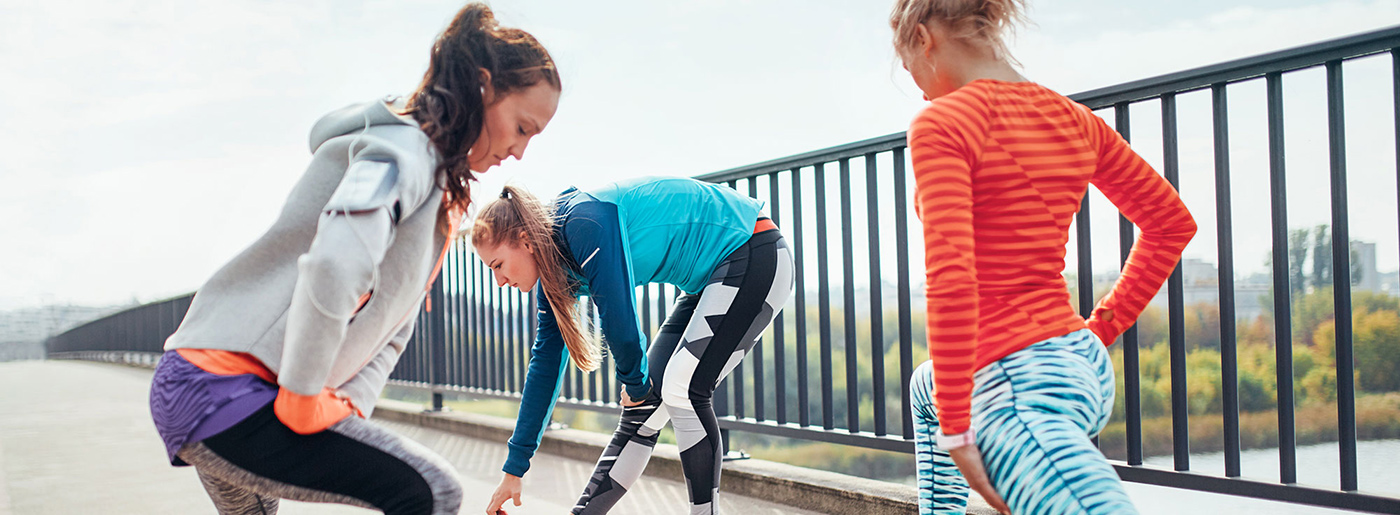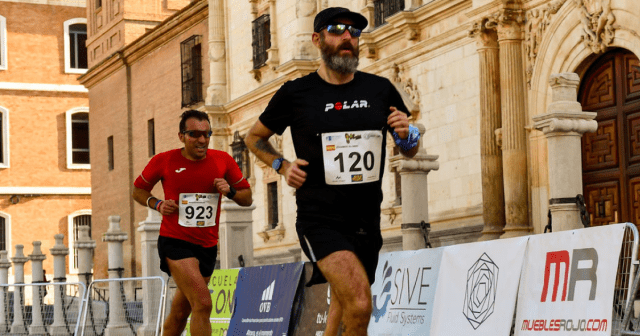We do it every day, all day long, without even thinking about it, but while running, we should pay attention to breathing.
Why should breathing while running be any different? Step 1: Breathe in. Step 2: Breathe out. Step 3: Repeat until you reach the finish line… right? Not quite.
If you already have some running miles under your belt, you know that there are more than a few bumps on the road when you’re trying to find the right breathing rhythm. If you’re a beginner just getting started with running, you may not have given much thought to how to breathe while running, yet – but you will eventually.
Whether you’ve already started working on the optimal way to breathe while running or you’re only getting ready to take your first running steps, here’s some insight into breathing while running that will hopefully help you take deeper, better breaths.
We take approximately 23,000 breaths a day and 8,400,000 breaths in a year, and we do it automatically without being aware of it. The physiological process of breathing means taking oxygen from the atmosphere, which our bodies then use for cellular respiration, among other things, and expel carbon dioxide as a by-product.
While all this happens automatically, some elements of life make us more conscious of our breathing – sports being one of them. Before digging deeper into how you can use breathing to improve your running, let’s take a quick look at how the human respiratory system works with the rest of the body.
Getting to know the human respiratory system
The human respiratory system is split into two parts: 1) the upper respiratory tract and 2) the lower respiratory tract.
The upper respiratory tract
The upper respiratory tract consists of the nose, mouth and upper section of the trachea, which connects the throat to the bronchi and is responsible for allowing airflow to and from the lungs.
The lower respiratory tract
The lower respiratory tract consists of the trachea, the bronchi, bronchioles and the lungs. Organs of the lower respiratory tract are positioned within the chest cavity and are protected by the ribcage, sternum (chest bone) and muscles that sit between the diaphragm and the ribs.
How we breathe
The process of breathing can be split into inhaling and exhaling. When you inhale, your chest cavity expands and your diaphragm and intercostal muscles (groups of muscles that sit between the ribs) contract, causing the ribcage to expand. As the diaphragm contracts, the volume of the chest increases, which in turn causes a reduction in the pressure inside the chest, sucking air into the lungs.
Conversely, when you exhale air is driven from the lungs by contraction of the chest volume. The intercostal muscles relax, causing the ribcage to drop inwards and downwards. The diaphragm relaxes causing the volume of the chest to decrease, which in turn causes an increase in the pressure inside the chest pushing air out.
Responses to exercise
Similarly to the cardiovascular system, a greater stress is placed on the respiratory system during certain types of exercise. At the start of exercise an increase in breathing (pulmonary ventilation) is observed which is in direct proportion to exercise intensity and the metabolic demands of the exercise. For example, pulmonary ventilation is significantly greater during heavy exercise and much lower during light intensity exercise.
Breathing while running
To achieve effective and efficient breathing while running, it may be beneficial to integrate breathing and movement so that breathing in and breathing out happen at points that correspond and are compatible with certain moments in the specific movement cycle.
A research group from the University of Utah and the Royal Veterinary College in Hatfield in the UK looked at how humans coordinate their breathing and locomotion and found that a runner’s foot strike can impact how air moves through the respiratory system and that runners do naturally fall into a cycle that is most efficient.
The findings suggest that breathing at a rate which rhythmically matches locomotion may be beneficial in reducing the stress placed on the respiratory system during running.
The key takeaway from this is that there is a link between running locomotion, an individual’s breathing cycle and the respiratory system, which can positively effect perception of effort and, therefore, pacing.
Take one step and then exhale?
Another interesting observation has been taken from this type of study relating to the number of steps or foot strikes for every breath taken. Most runners naturally either exhale during every step or foot strike or exhale every other step or foot strike.
What runners should know is that exhaling during every step may increase the risk of injury.
This may sound like an insignificant difference but what runners should know is that exhaling during every step may increase the risk of running injury.
When we exhale our diaphragm relaxes and, thus, our core becomes less stable, which places an increased stress on one leg and foot. If you exhale on only every other step, the stress and forces associated with running are split more evenly between both feet and legs.
Move from short and shallow to deep breaths
In addition to the timing and rate of breathing, you should also consider the type of breathing, especially if you are prone to stitches. Stitches may be caused and resolved by several different things, but taking deep breaths rather than short shallow breaths may help.
Deeper breaths that incorporate the stomach and lungs improve posture and thus decrease the stress placed on the ligaments that support the diaphragm.
To give deeper breaths a go, lie on your back on the floor and begin to breathe deeply with your hand lying flat on your stomach.
A natural rise in your hand position will indicate your stomach is being used. If your chest moves up and down a lot more than your stomach you’re utilising your chest a lot more. If this is the case focus on taking long, deep breaths which will move your hand up and down on your stomach.
To try breathing more deeply while running, intermittently take a deep inhalation and forceful exhalation to help relax your posture and get back to a steady breathing rhythm.
Whilst running, intermittently take a deep inhalation and forceful exhalation to help relax your posture and get back to a steady breathing rhythm.
The next time you’re doing yoga or meditating be sure to focus on your breathing. Then try to take that same breathing with you for your runs. Controlling your breathing, but also synching your breathing to your movement, may prove to be beneficial, improve your training session and help to maintain a suitable pace, as well as posture.
Become aware of your running cadence, the rhythm and type of your breathing to see what difference it makes to your next run.
If you liked this post, don’t forget to share so that others can find it, too.
Or give it a thumbs up!
I like this article
Please note that the information provided in the Polar Blog articles cannot replace individual advice from health professionals. Please consult your physician before starting a new fitness program.





